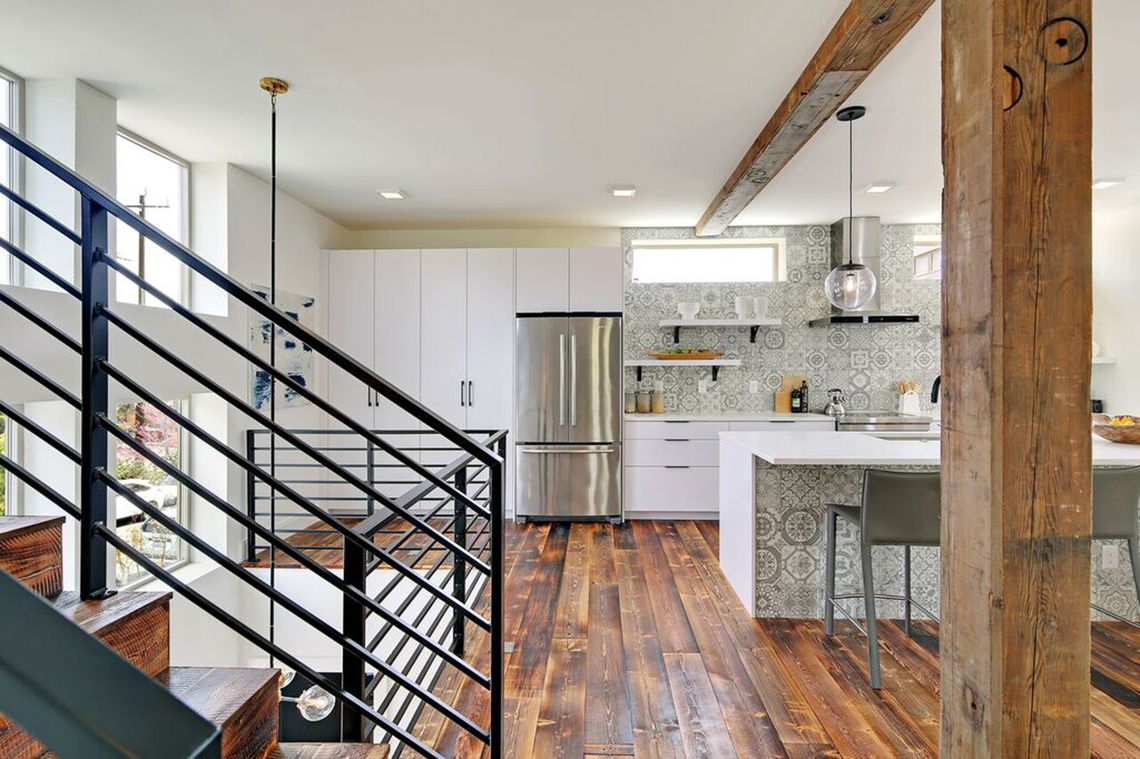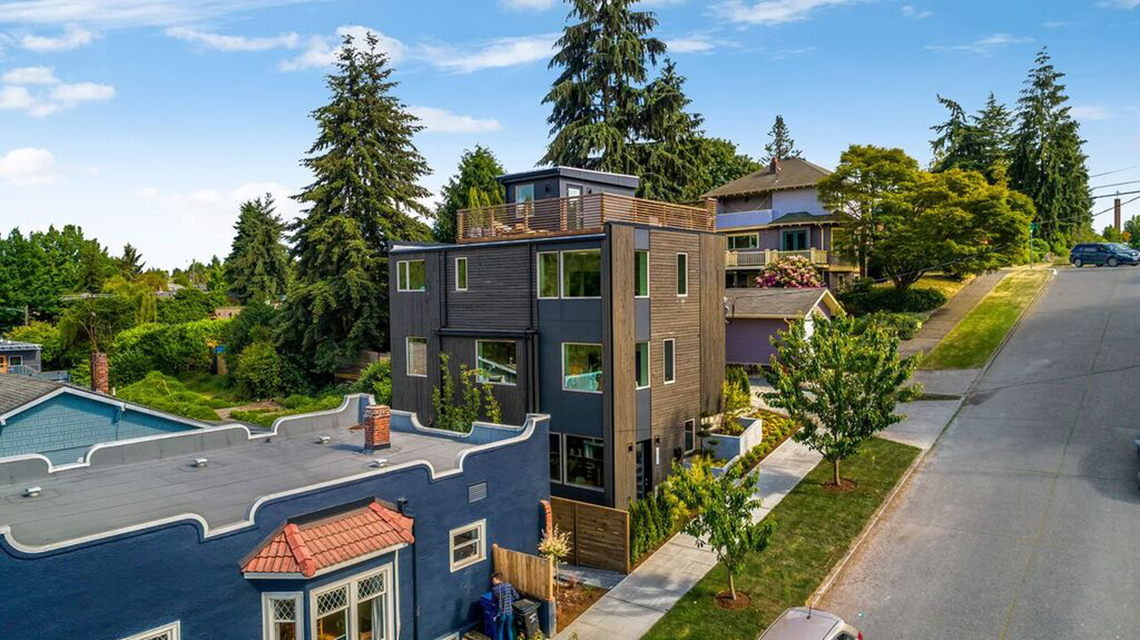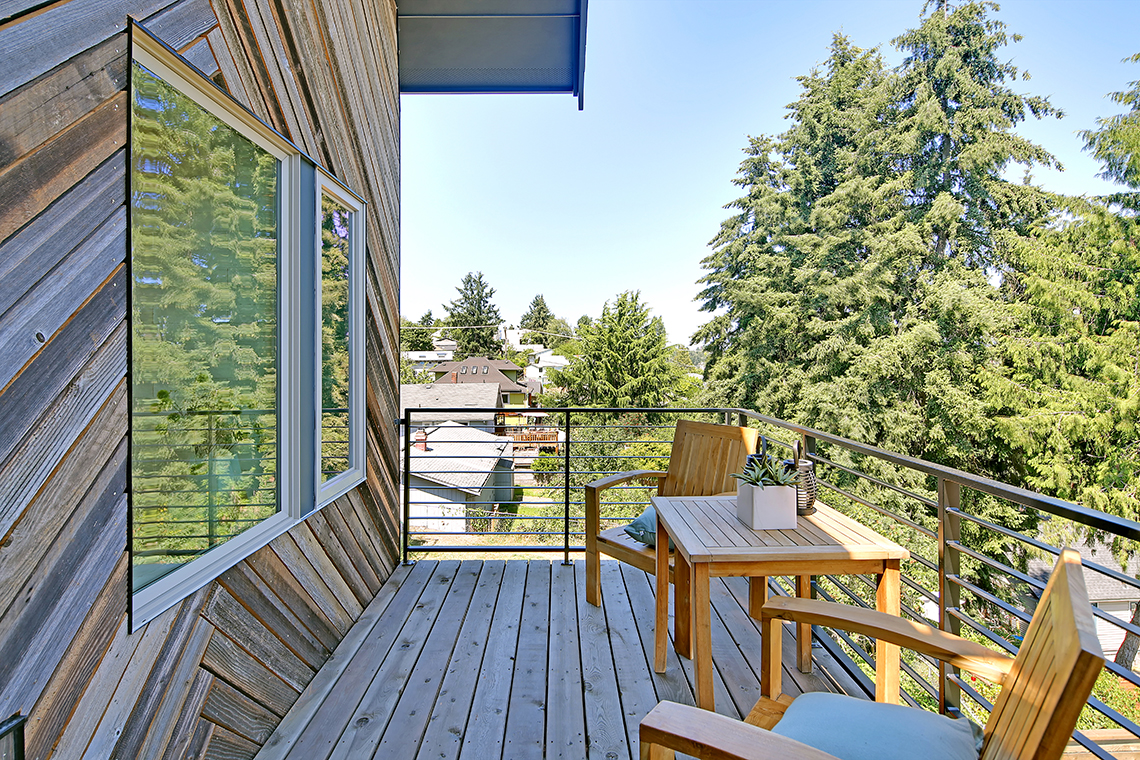You might have heard of Dwell Development because the company has a stellar reputation for building homes exclusively to the Built Green 5-Star level—or even higher. A Dwell project received the first Built Green® Net Zero Energy label and Dwell built Seattle’s first (and very successful) Built Green Emerald Star home. What’s more, Dwell principal Anthony Maschmedt has built well over 100 certified Built Green homes since joining the program a decade ago. In short, we aren’t talking about feats that many small builders can boast.

Dwell builds this way because its guiding principle is to create a better tomorrow. And that starts with individual residents. Dwell believes that homes should be long-lasting, livable, and healthy. Anthony knows that the best way to do that is to build green. His 5-Star homes set owners up for a lifetime of comfortable, sustainable living.
As previous winners of Built Green’s Moving the Market Award (2016), Dwell has a history of raising the bar. But they don’t do that on just a home-by-home basis. Dwell homes are also exclusively built on infill sites. Most readers will recognize this to mean land in developed areas. From our perspective, infill development means sustainability. The simplified math is that the less land we use for homes and transportation, the more we have for biodiverse, wild ecosystems; for recreation; and for renewable energy generation. Anthony sums it up best, “infill development itself is the most sustainable way to build.”

And that’s not true just because of my reductive spatial equation. Builders like Anthony also like infill development because it is cost efficient. The density of building in existing urban spaces doesn’t just curtail sprawl, it increases efficiency by slashing the need for expansive, human-centric infrastructure systems. It’s obvious why builders are happy when electric grids and storm drains are already in place on the build site. That’s one less cost, plus it’s more efficient in terms of land-use, distribution, and urban resource management. New residents benefit, too, because amenities and services are already established. Anthony is particularly fond of building near light rail, which provides access to even more amenities and encourages a car-independent lifestyle.
Infill development is not, however, without controversy. In the news now is Seattle’s Accessory Dwelling Units (ADUs) Environmental Impact Statement, the final version of which was recently released after delays due to legal challenges. Building an ADU makes better use of land and infrastructure by providing more residences on the same single-family lot. Built Green awards points for new projects that include attached or detached accessory dwelling units, a credit that Dwell has taken advantage of in the past.
Infill development doesn’t have to mean destroying existing homes or overwriting neighborhood character. In fact, Dwell preserves existing homes whenever it can, even restoring them while erecting new structures nearby. And when that isn’t possible, Dwell reclaims original materials, reusing them for that recognizable ‘salvaged’ look in its new builds.

Nevertheless, Anthony is conscious of the change his new construction brings to neighborhoods and practices making allies, not enemies. He says, “We choose to focus on the positive of it.” That is, the existing home is preserved and there’s a new home for someone else. You may have noticed an influx of people to the Puget Sound area, all of whom need homes. Anthony puts it in his blunt, characteristic way, “We’re not a little city anymore. We’re a big city. And we’ve got to start acting like it.” If we are going to be a big city, we don’t just need to house the booming population and ensure those living in Seattle aren’t priced out, we also need to plan for a sustainable future. How? Green homes and density are part of the answer.
At the same time, that population boom strains existing infrastructure, so that even with favorable zoning, the cost of infrastructure improvements curbs housing density all on its own. This frustrates builders who want to make the same sustainable choices Dwell does but can’t due to rising costs and slim margins. Which is why it’s important to have companies like Dwell out there—and advocates like Anthony—who are on the ground, leading by example, talking to councilmembers, and advocating for greener homes and incentives that will spur more of them. Built Green and MBAKS are partners in that effort. Because just as we all win when green homes are built, we all lose when they are not.
Considering Dwell’s choice to build all green all the time, you’d be right in thinking they’ve developed some expertise. As Anthony modestly says, “We’ve become pretty efficient at it.” And that’s exactly what we need. We need builders who build green and build dense. Builders who raise the bar and show others that building green is possible and even cost-effective. Without them, we’d be stuck in a cycle of sprawl and inefficiency that we cannot afford.
Photos courtesy Dwell Development and Paxson Fay